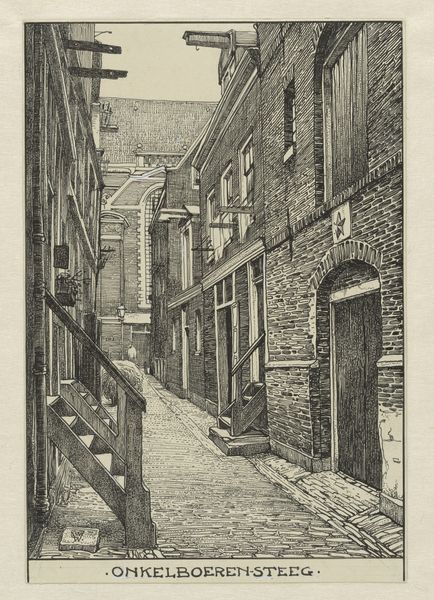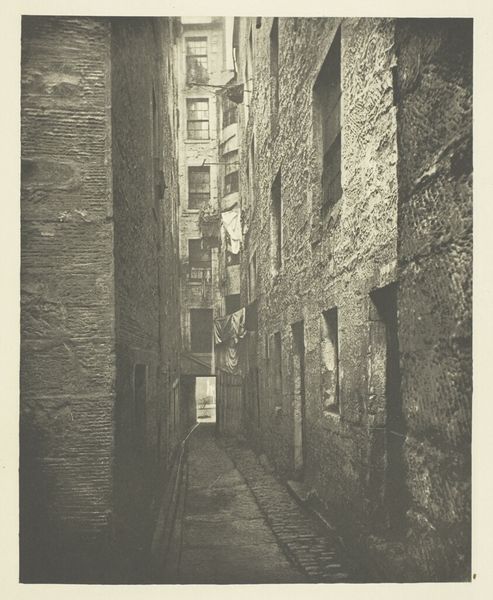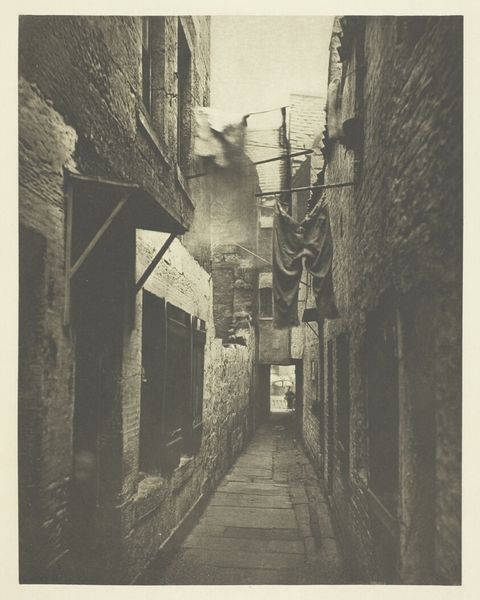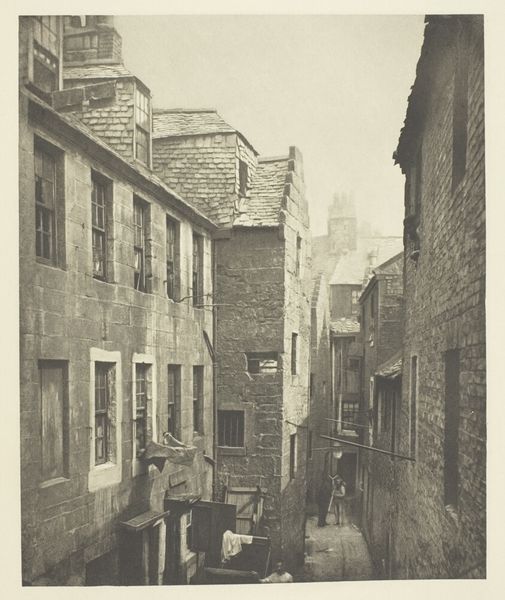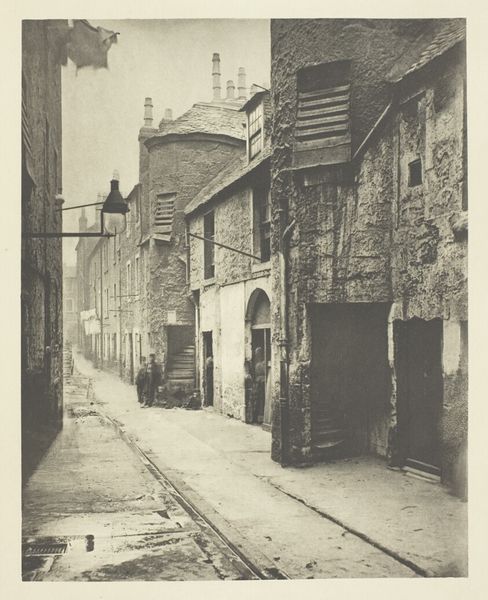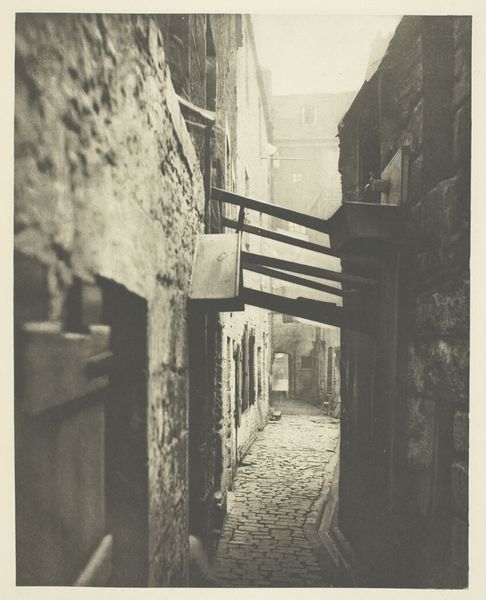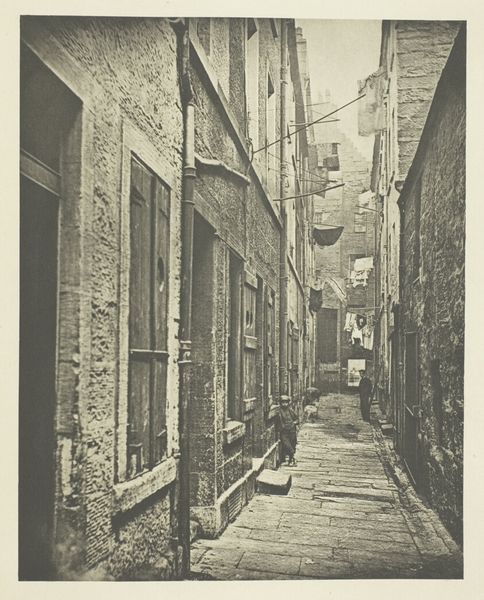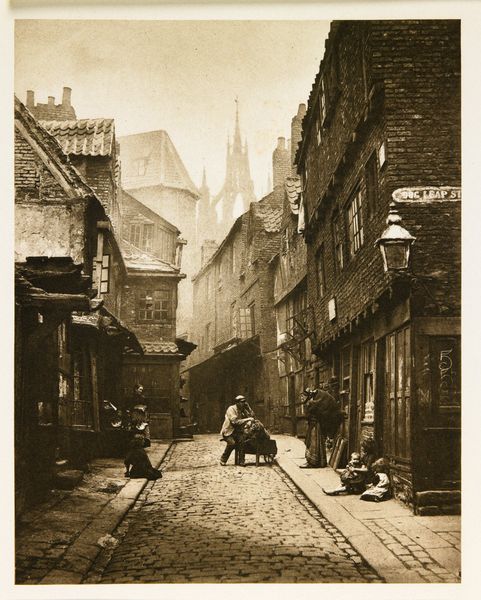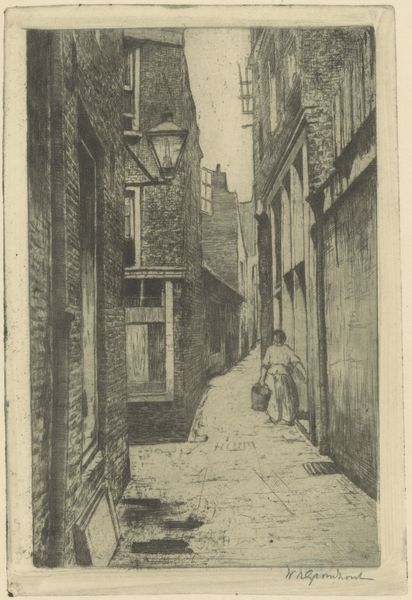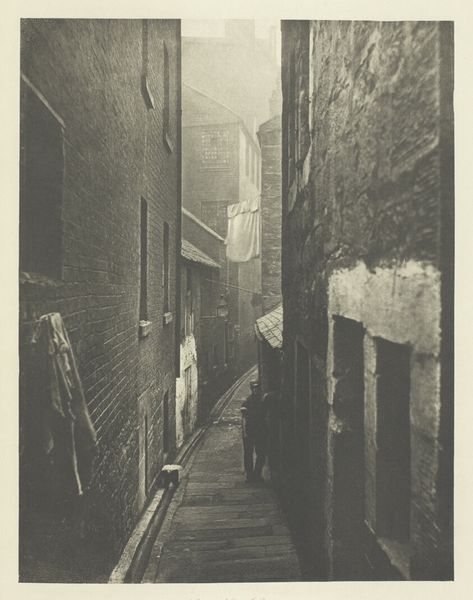
print, photography
#
16_19th-century
# print
#
street-photography
#
photography
#
19th century
#
cityscape
#
realism
Dimensions: 22.5 × 18.5 cm (image); 38.2 × 28 cm (paper)
Copyright: Public Domain
Editor: So, here we have Thomas Annan's "Close No. 75 High Street," a photograph from 1868, held at the Art Institute of Chicago. The scene is so gritty, with clothes hanging everywhere. It's interesting that the artist chose photography for something so seemingly...ordinary. What’s your take on this image? Curator: I find it fascinating to consider Annan’s material choices within the social context. Why use photography, a relatively new and reproducible medium, to document this urban scene? He's deliberately choosing a medium linked to mass production, breaking down the traditional hierarchy separating fine art from the everyday. Editor: That makes sense. It’s almost like he is democratizing art by depicting a scene of labor and daily life through a reproducible medium. Curator: Exactly! Consider the “close” itself – the tight alleyway. What does that constricted space suggest about the lives of those inhabiting it? Note the materiality of the buildings, the worn stone, the cobbled street, and even the laundry strung across. Editor: So, you're saying that these mundane details become significant because Annan, through his photographic process, draws attention to the physical realities of urban life for the working class? It really reframes how I see those hanging clothes. Curator: Precisely! And let’s think about how this image might have been consumed. Who was the intended audience? What commentary, if any, do you believe Annan makes about Victorian society with this piece? Editor: Perhaps this photograph served as a form of social commentary on Victorian industrial life? Curator: It is worth investigating how advancements of material like the camera lens allowed a turn to document the under-represented and critique Victorian power structures. Food for thought! Editor: It really is! Thank you. I never considered how the materials and their context could add such layers of meaning to a photograph. Curator: Indeed. By looking at art through a materialist lens, we start to appreciate art making not only as craft, but as social practice, inextricably linked to the world we inhabit.
Comments
No comments
Be the first to comment and join the conversation on the ultimate creative platform.
